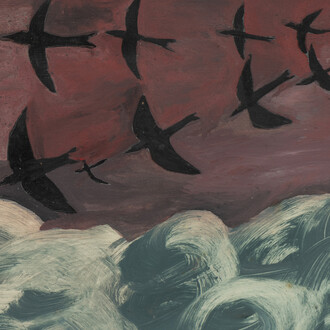Today is a very sad day. . . . This morning when I got up I wanted to cry, but the tears would not come. Before we cast this one little vote, we all should ask the question: is this good for America—if it’s good for the American people—if it’s good for this institution? When I was growing up in rural Alabama during the forties and the fifties as a young child, near a shotgun house where my aunt live, one afternoon an unbelievable storm occurred. The wind start blowing, the rain fell on the tin-top roof of this house. Lightning start flashing. (RAP, RAP) The thunder start rolling. And my aunt ask us all to come into this house and to hold hands. (RAP, RAP) And we held hands. And as the wind continued to blow, we would walk (RAP) to that corner of the house (RAP) that was trying to lift (RAP) and another corner (RAP) that was trying to lift (RAP), and we would walk there. (RAP) We never left the house. (RAP) The wind may blow. (RAP) The thunder may roll. (RAP) The lightning may flash. RAP But we must never leave the American house. (RAP) We must stay together as a family. (RAP) One house. (RAP) One family. (RAP) The American house. (RAP) The American family.
(Representative John Lewis, D-GA, December 1998, US Congress, Impeachment Of President Bill Clinton)
Donald Moffett’s sound installation, IMPEACH (2006), is a recording of Rep. John Lewis’s impassioned speech from the floor of the US House of Representatives during President William Clinton’s impeachment hearings in 1998. Speaking metaphorically, the legendary civil rights icon argued against the impeachment of President Clinton and issued a plea for the American family to “stay together” as “one house and as one family.” Rep. Lewis’s speech slowed the congressional proceedings for approximately one minute before the vote was called and the matter was lost.
The installation consists of speakers and an audio player and required no physical alteration to the Confederate Memorial Chapel, which was built in the aftermath of the Civil War—with funding from the North and South—and served as a nondenominational place of worship for the R. E. Lee Camp Confederate Soldiers’ Home. In the context of this space, Moffett’s immersive sound work speaks to the long history of divisive politics in America and the power of reconciliation.
















